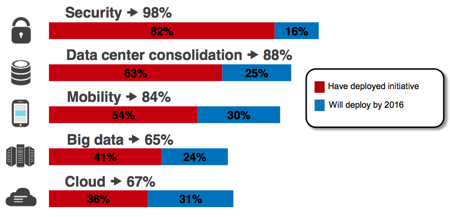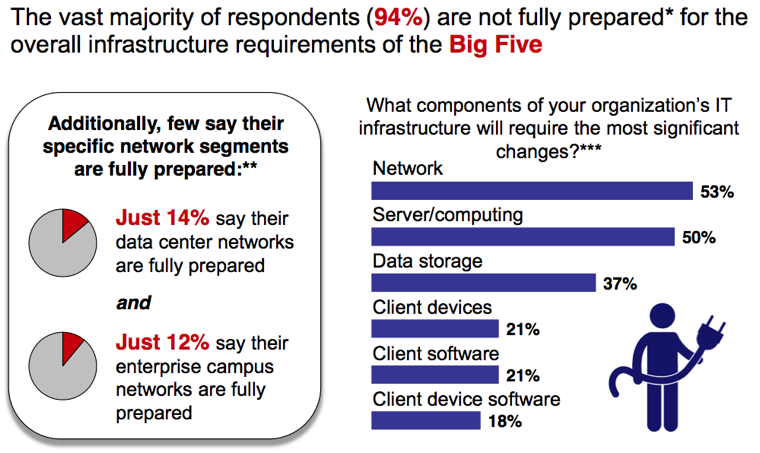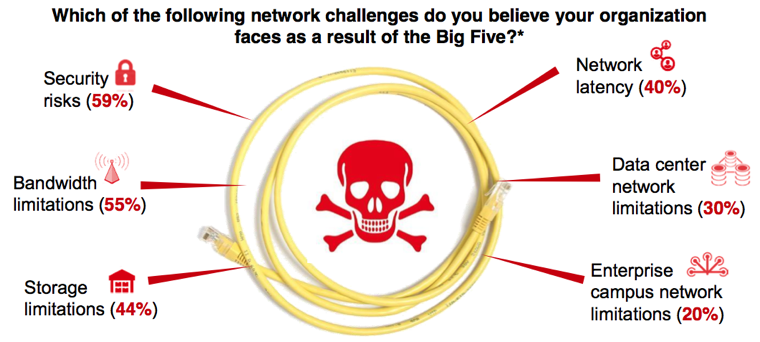Government’s Real Tech Problem Is Bandwidth
Technology wouldn’t be so frustrating if the potential benefits of enterprise solutions weren’t so enticing. Big Data, for example, could help police departments streamline investigations, health departments predict flu outbreaks and traffic controllers ease congestion. The problem — like all emerging technology — is that it’s expensive to research and implement.
This year, there are five technologies — data center consolidation, mobility, security, Big Data, and cloud computing — that promise to transform the way public employees work and citizens interact with their government. MeriTalk’s recent report The Big Five in Overdrive provided some interesting insight into where state and local governments stand with these important technologies. According to 201 state and local government officials, 94 percent of governments don’t have the infrastructure to support all five technologies. Here is a look at some of the other key findings.
Security Is The Priority

Not surprisingly, security takes precedence over potential cost-savers like data center consolidation and cloud computing. While those efficiencies will be nice in the future, it’s essential that governments continue to invest in security to protect their networks, data and devices. In addition to the project management and budget challenges, 89 percent of respondents said they would need additional network resources to support all five initiatives at once.
Bandwidth Is Constantly in Demand

Networks are key to moving data and connecting workers, but will there ever be enough bandwidth to keep up? Forging ahead without the network infrastructure to support new technology simply won’t work. Bottlenecks can lead to a number of risks, and 48 percent of those surveyed said they face at least a moderate risk. Another 15 percent rated the risk of bottleneck issues as significant. The average government would need to add 36 percent to its network capacity to maintain the same level of service it currently provides.
How Much Tech Is Too Much?

The chart above outlines the numerous challenges involved with rolling out new technology. These challenges mean that governments need to continue to balance new technology with existing solutions that are already working. By identifying low-hanging fruit and ROI-producing efficiencies, governments can begin to move toward a more streamlined and cost-effective approach to IT.








